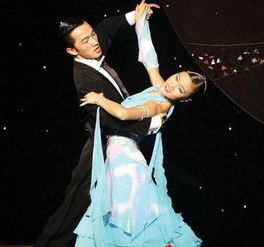Exploring the Art of Dance in Purely Musical Choreography
In the realm of dance, the fusion of movement and music creates a captivating synergy that transcends linguistic boundaries, allowing emotions and stories to be conveyed through the universal language of the body. Within this vast landscape of dance, the genre of purely musical choreography stands as a testament to the power of music to inspire movement and evoke profound emotional responses. Let's delve into the intricacies of this captivating art form, exploring its characteristics, challenges, and the creative process behind crafting choreography that harmonizes seamlessly with music.
Understanding Purely Musical Choreography
Purely musical choreography, often referred to as abstract or nonrepresentational dance, focuses solely on the relationship between movement and music, without the constraints of narrative or literal interpretation. In this genre, dancers synchronize their movements with the rhythms, melodies, and emotions embedded within the music, creating visual compositions that mirror the auditory landscape.
Key Characteristics:
1.
Emotional Expression
: Purely musical choreography offers a platform for emotional expression through movement, allowing dancers to embody the mood, tempo, and dynamics of the music.2.
Technical Precision
: Achieving synchronization between movement and music requires impeccable timing, precision, and control from dancers, highlighting their technical prowess.3.
Exploration of Musical Elements
: Choreographers often dissect the musical composition, interpreting various elements such as rhythm, harmony, and texture through movement dynamics, spatial patterns, and group formations.4.
Interplay of Light and Sound
: Lighting design plays a crucial role in enhancing the audience's experience, accentuating the nuances of movement and highlighting the interplay between light, sound, and shadow.Creative Process:
Crafting purely musical choreography is a collaborative endeavor that involves choreographers, dancers, composers, and lighting designers. The creative process typically unfolds in the following stages:
1.
Music Selection
: Choreographers carefully select music that resonates with their artistic vision, considering its emotional depth, structural complexity, and thematic relevance.2.
Movement Exploration
: Dancers engage in improvisational exercises to explore movement possibilities inspired by the music, experimenting with different styles, dynamics, and spatial arrangements.3.
Choreographic Development
: Choreographers devise movement phrases and sequences that capture the essence of the music, integrating elements of contrast, repetition, and development to create a cohesive choreographic structure.4.
Refinement and Rehearsal
: Through iterative rehearsals, dancers refine their movements, focusing on achieving precision, clarity, and emotional authenticity. Choreographers provide feedback and guidance, finetuning the choreography to achieve artistic coherence.5.
Integration of Lighting Design
: Lighting designers collaborate with choreographers to enhance the visual impact of the performance, utilizing light and shadow to accentuate movement dynamics and create atmospheric effects.Challenges:
While purely musical choreography offers boundless creative possibilities, it also presents unique challenges for choreographers and dancers:
1.
Interpretive Depth
: Translating the emotional nuances of the music into movement requires a deep understanding of musical phrasing, dynamics, and expression, challenging dancers to embody subtlety and nuance.2.
Technical Precision
: Synchronizing movement with complex musical rhythms and tempos demands exceptional technical proficiency from dancers, necessitating rigorous training and rehearsal.3.
Artistic Interpretation
: Choreographers must strike a balance between honoring the integrity of the music and infusing the choreography with their artistic vision, navigating the tension between literal interpretation and abstraction.4.
Audience Engagement
: Without the aid of narrative or thematic context, purely musical choreography relies heavily on the audience's ability to connect emotionally with the music and appreciate the beauty of pure movement.Conclusion:

Purely musical choreography serves as a testament to the profound synergy between music and dance, offering a canvas for artistic expression and emotional exploration. Through meticulous craftsmanship and creative collaboration, choreographers and dancers breathe life into the music, transforming auditory melodies into visual poetry. As audiences are swept away by the mesmerizing interplay of movement and music, they bear witness to the transcendent power of artistic expression in its purest form.











